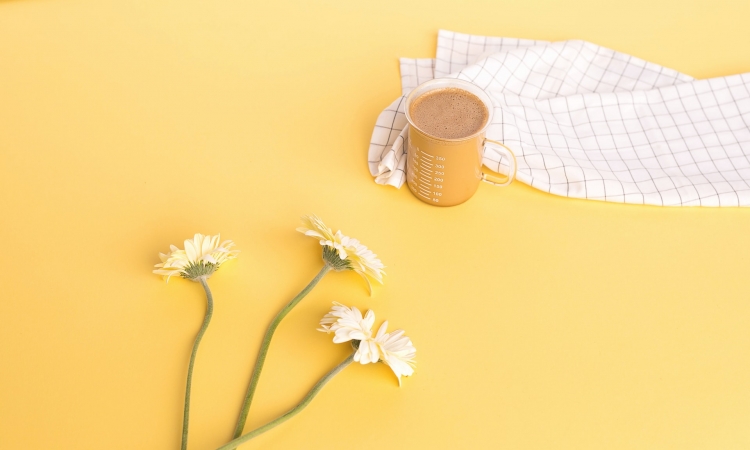Yellow has quickly become a design staple, but have you ever stopped to wonder what cultural implications it has? In this post, we'll look at the cultural implications of yellow in design and discuss the meaning behind the color. Keep reading to learn more!
A History of Yellow in Different Cultural Contexts: Exploring how the color yellow has been used in cultures around the world and how its meaning has evolved.
The color yellow has been used in various cultures worldwide for centuries. It has many meanings and connotations, from being associated with sunshine and happiness to representing danger and caution. In design, yellow has been used to create various visual effects and moods, from energizing and uplifting to calming and reassuring.
In Europe, yellow has been associated with royalty since the middle ages. It was used to signify wealth and power. In the Renaissance, Italian artists began to use yellow as a color of light and optimism. It was also used to evoke a sense of warmth and welcome. During the 19th century, yellow became popular in the decorative arts and was used to create several ornamental designs.
In Asian cultures, yellow is often associated with the sun and symbolizes good luck. Chinese emperors traditionally wore yellow robes, and Chinese brides often wore yellow dresses. In Japan, yellow is the color of courage and bravery. In India, yellow is a sign of peace and prosperity. The Hindu god Vishnu is often depicted wearing yellow garments. Yellow is also used in Indian flags and symbols.
In the modern world, yellow is still used in design to add energy, light, and optimism to any space. It is a versatile color that can be used to create a range of visual effects and moods. Whether it is used to evoke joy and positivity or to signify caution and warning, yellow will always be an important color in the design.
The Representation of Yellow in Contemporary Design: Examining the significance of yellow in modern design and the cultural implications of its use.
The use of yellow in contemporary design creatives has adopted creatives have adopted its bold and vibrant colored, and vibrant colors across various mediums. From web design to product packaging, yellow is now used in yellow's history and meaning. We can understand yellow's meaning and its importance in modern design.
Throughout the world, yellow is associated with the sun and its warmth, often symbolizing life and hope. In Asian cultures, yellow is the traditional color of royalty, while in Western cultures, it has been linked to creativity and intelligence. Sometimes, it can even give a sense of unease or danger. Regardless of the connotations, yellow is a mighty color when used in the design, as it can evoke strong emotions and create striking visual contrast.
Using yellow in modern design is important for creating an impactful visual experience. With its ability to draw attention and create a positive atmosphere, yellow can effectively communicate a brand's message and create a memorable impression. Its ability to evoke a wide range of emotions makes it an invaluable tool for designers looking to make a statement. By understanding th and historical significance of yellow in design, designers can ensure that their work stands out from the crowd.
The Impact of Yellow in Different Industries: Invellow has been used in the fashion, advertising, and architecture sectors.
Yellow is a vibrant and attention-grabbing hue that has been used in design for centuries. In fashion, the use of yellow can be traced back to those Chanel popularized it when Coco Chanel popularized it in her designs. Today, yellow is a popular choice in clothing, accessories, and even cosmetics, associated with optimism and joy. In advertising, yellow is often used to draw attention to a product or service and to evoke feelings of happiness and fun. Advertisers use yellow to create impactful visuals and to make their messages stand out from the competition. In architecture, yellow is used in various ways, from bright yellow accents in interior design to the bold use of yellow in the exteriors of buildings. It is also used to signify importance, as in the yellow-and-black striped barriers found in front of government buildings. Whatever the context, yellow is a versatile color that can be used to make a statement in design.
Analyzing the Psychological Impact of Yellow: Discuss how yellow can evoke different psychological responses and how it can be used to influence consumer behavior.
The psychological impact of yellow is often overlooked in design, but it is a powerful tool that can evoke a wide range of emotions and influence consumer behavior. As a vibrant and energizing hue, yellow is associated with warm and welcoming tones that encourage optimism. In addition, yellow is often associated with creativity, making it a popular choice for companies that look yellow Canmore; the color yellow can create a sense of trust, as it is often associated with safety and security.
On the other hand, yellow can also create anxiety and unease. It can be overwhelming and can quickly become too bright and distracting. For instance, if used excessively, yellow can be off-puttindecreaseers and may decrease sales. Therefore, when used in the design, yellow should be used sparingly to ensure that it is not too intense. Utilizing a muted yellow tone or using yellow as an accent color can allow for a more balanced and practical design.
Overall, yellow is an incredibly versatile color and can create a wide range of psychological responses. Designers should be aware of the impact of yellow ca. Consumer behavior, as it can create a positive and welcoming environment or evoke feelings of anxiety and unease. By understanding the psychological implications of yellow, designers can effectively use it to influence consumer behavior.
Cultural Stereotypes of Yellow: Examining how yellow is used to represent and reinforce cultural stereotypes.
Yellow has a deep history of representing values and beliefs in cultures around the world. From its use in the art of ancient civilizations to its modern appropriation in design, yellow has been used to convey notions of power, status, and wealth. As a color, it has been used to represent various things, from royalty to emotion, but it is also often used to reinfThislturalreotypes. This paper will explore the use of yellow in design to represent and reinforce cultural stereotypes.
The use of yellow to represent cultural stereotypes can take many forms. One of the most common is its use in logos and symbols. For example, the Chinese dragon is often depicted with a yellow background, representing the color's association with prosperity and fortune. Similarly, the yellow star is a common symbol used to represent India and its culture. The color is also used to represent spiritual beliefs and cultural values, such as the Hindu god Ganesha, who is often depicted with a golden hue.
Using yellow in design to represent cultural stereotypes can also extend beyond symbolism and logos. It is often used in the background of images to suggest a specific cultural connotation. For instance, a picture of a Chinese restaurant might feature a bright yellow reference referencing Chinese culture's traditional color. Similarly, yellow can represent certain aspects of a culture, such as the bright and colorful clothing of the people of India.
It is important to recognize the power of yellow in design and its ability to represent and reinforce cultural stereotypes. By understanding how yellow is used in the design and its implications, designers can be more conscious of the messages they convey through their work. Furthermore, designers can use it to celebrate cultural diversity and encourage inclusivity. We can work towards a more tolerant and empathetic society by carefully considering how yellow is used in the design.
The Power of Yellow as a Symbol: Analyzing how yellow conveys a message or evokes a particular emotional response.
Yellow is an iconic color used in design for centuries. It is often associated with energy, joy, and happiness as a bright and cheery hue. In design, yellow can be used to draw attention to certain elements or to create a feeling of vibrancy. This bright and versatile color can create memorable logos, vivid websites, and captivating illustrations. It can also be used to convey a sense of optimism, creativity, and inspiration. Regarding emotional response, yellow can invoke joy, optimism, and enthusiasm. It can be used to create a feeling of warmth and sunshine or to suggest caution or warning. Yellow can bring attention to the most important elements in a design, making it a powerful tool for designers. Additionally, yellow can create a sense of contrast and balance within a design, adding depth and complexity. With its bold and powerful effect, yellow is a color that should be used thoughtfully and strategically when creating designs.
Understanding the Cultural Implications of Yellow in Design
The color yellow is a vital part of the design, as it is one of the most easily recognizable colors. It is often associated with joy, happiness, and optimism, making it a popular choice for design projects. However, its use in design can have cultural implications that need to be considered.
For example, in some cultures, yellow can be associated with mourning and represents sadness and grief. Therefore, designers must be aware of their des projects' cultural context to ensure that yellow is not offensive or inappropriate. Additionally, yellow is considered an attention-grabbing color, which makes it great for use in designs that need to stand out. However, it can also be used in a way that is overly aggressive or intimidating, so caution must be taken.
In conclusion, yellow is an important part of the design and can evoke different emotions and feelings. However, yellow can be misinterpreted in different cultures, so designers should take the time to understand the cultural implications of the color before incorporating it into their designs.
Conclusion
When using yellow in design, it is important to consider the cultural implications of the color. In some cultures, yellow is seen as a sign of luck, wealth, and happiness. In other cultures, yellow has more negative connotations associated with it. It is also important to consider the context in which the color will be used, as it can evoke different emotions depending on the environment. Ultimately, designers should use their best judgment when incorporating yellow into their designs, as the cultural implications of the color can be interpreted differently by different audiences.




